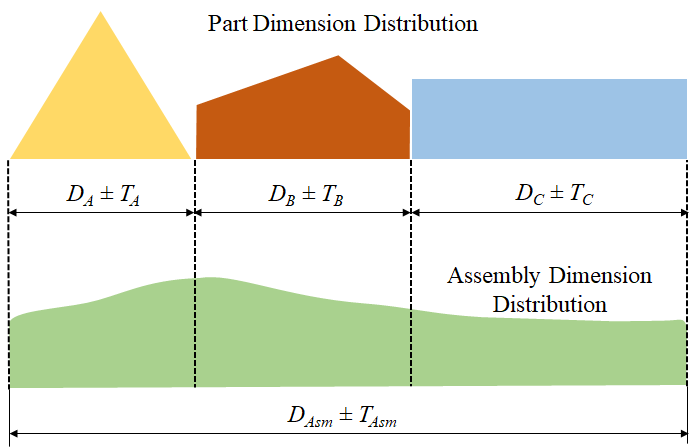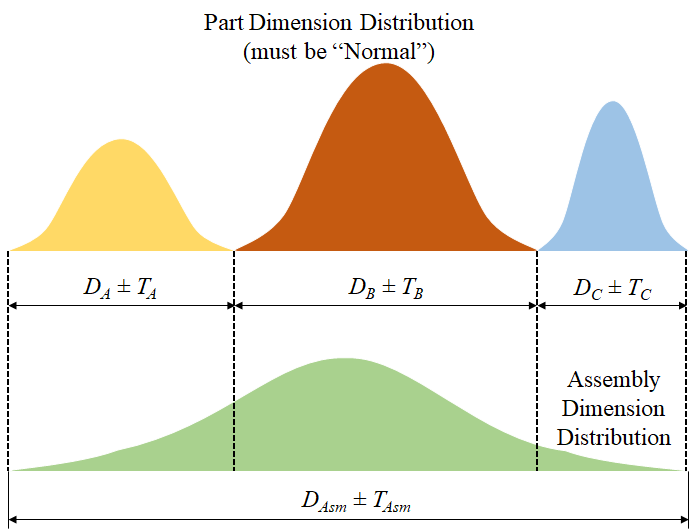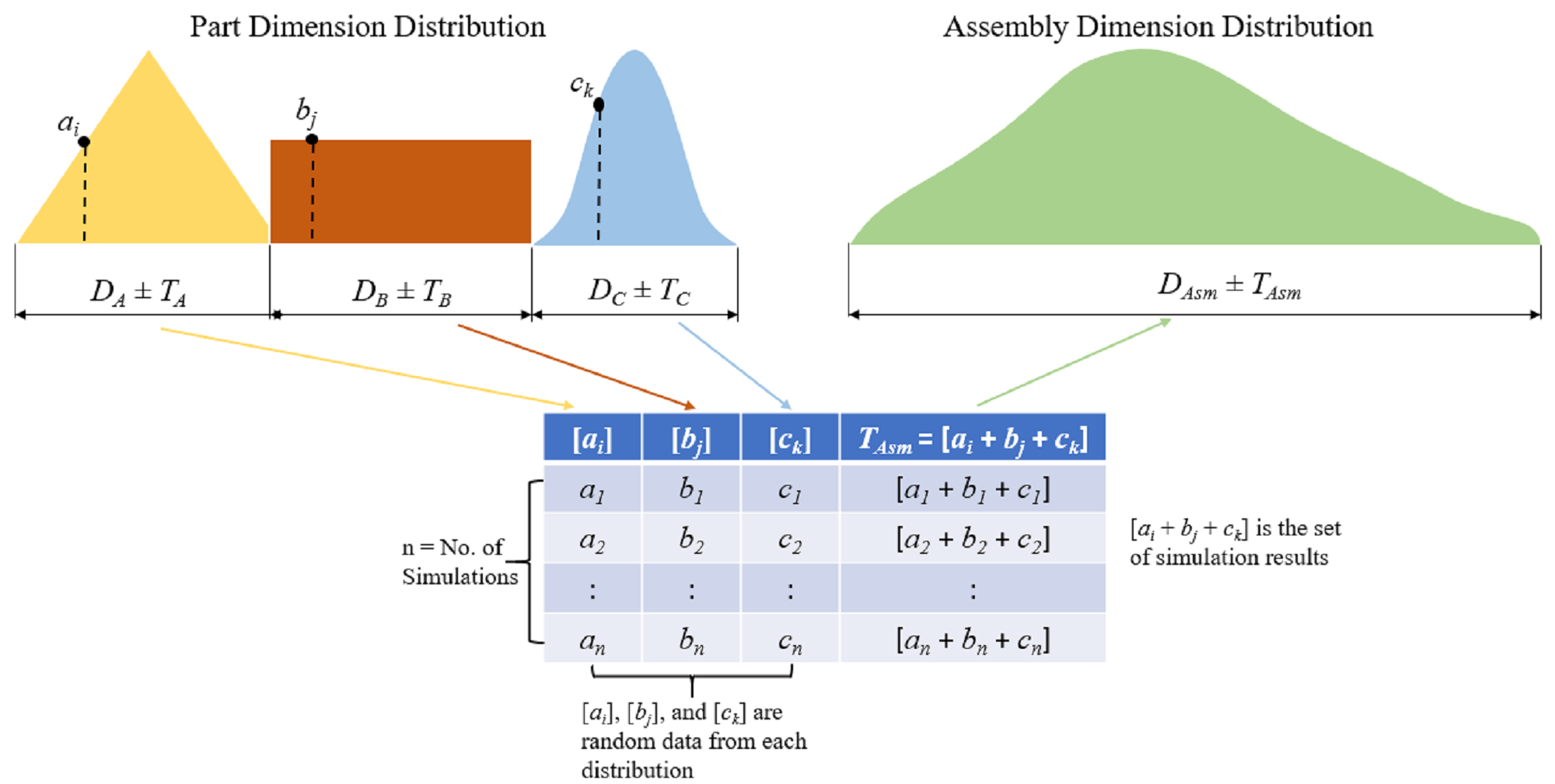Worst-case analysis is a direct addition of part tolerances to determine assembly variation. Through this approach, the individual part acceptance will be 100% and no interference will occur. This may also lead to over-design, example preserved assembly gap is too large. This approach is advisable for extremely critical applications where part per million (ppm) defects needs to be zero. It is also useful and appropriate for problems that involve just three or four parts. This analysis is mostly done in one direction, i.e. a 1D analysis. If the analysis has part dimensions which are not in the plane of the assembly measurement being studied, the stack-up approach needs to be modified to 2D analysis to factor in angles, or any variation which is not parallel to the 1D direction.

DAsm = DA + DB + DC
TAsm = TA + TB + TC
Figure 1: Assembly tolerance determination using Worst Case Analysis (WCA)
In this method, instead of adding up tolerances, as in worst-case analysis, assembly variation is the root sum square of the individual component tolerance values. RSS assumes the dimensional distribution of each component is normal which is typically the case in mass production. This allows comparison of the standard deviation to the assembly limits which can help in the calculation of quality metrics like Cpk, Cp, Ppk, etc. This approach requires distributions to be normal with all parts at the same quality level, i.e. +/- 3σ.



Figure 2: Assembly tolerance determination using Root Sum Square Analysis (RSS)
Monte Carlo analysis is an iterative method to calculate assembly variations by randomly changing possible values of the dimension, each obtained by following a specific distribution. It is the most suitable method when assemblies of parts have non-linear effects on the system or the individual components of the systems do not follow a normal distribution.

DAsm = DA + DB + DC
TAsm = [ai + bj + ck] …Simulation Results
Figure 3: Assembly tolerance determination using Monte Carlo Analysis (MCA)

Figure 4: Assembly tolerance variation comparison using different methods
As the figure shows the WCA range is always larger while RSS and MCA range depends on the input parameters of the analysis.
Tolerance analysis gives the following key parameters as outputs to evaluate and validate your design.
- Sensitivity: It is a measure of how the unit change in any dimension affects the final assembly dimension under study. It is one of the key factors to determine which areas of geometry can be improved.
- Contributors: It gives the percentage contribution of each component tolerance on the final assembly tolerance. This helps in determining the targets for tightening or loosening the tolerances.
- Range: The range of assembly variation is derived based on the assembly tolerance as shown in figure 4.
- Frequency Histogram: It is a graphical representation showing the probability of assembly variation and its values. The type of distribution, mean and standard deviation can be calculated based on it.
Root sum squared and other assembly variation analysis methods provide process capability and performance indices that must be controlled to produce a part that meets the assembly requirements. Using these matrices such as Cpk, Cp, Ppk, design engineer can allocate tolerance budgets tactfully. Manufacturing can then use this process and performance indices to focus on developing and refining their manufacturing process to meet them. Typically, the requirement for Cpk = 1.67 for key features which have ppm of 0.573 and Cp = 1.33 for non-key features which have ppm of 63.34. These decisions ensure optimum product quality, performance and manufacturing cost.
- The assembly parts can be readily replaceable and interchangeable.
- It reduces the manufacturing cost by reducing accuracy but maintaining functionality and design intent.
- The control of manufacturing processes becomes easy.
- It reduces part to part variations and improves quality.
- With the data from manufacturing, individual component dimensional distribution can be updated to obtain more realistic assembly variation tolerances.









